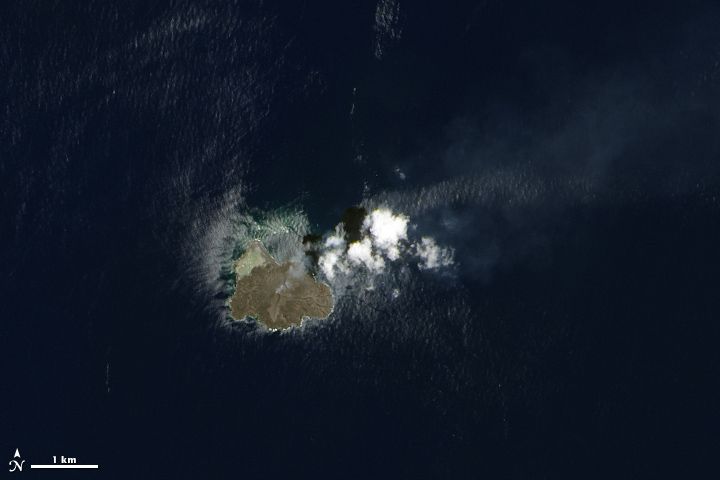About
For thousands of years, Nishinoshima, a volcanic island southeast of Tokyo, was quiet. Then, in April 1973, a burbling began beneath the water just east of the island. Passing sailors noticed smoke rising into the air.
Over the next few days new islands formed, then joined together, engulfing the original. Afterwards, Nishinoshima was no longer a blob, but a bumpy crescent, stretched out in both directions like it was grabbing at something.
The island could have stopped there, but it didn't: in late 2013, it happened again. Yet another underwater volcano near Nishinoshima began erupting, gushing lava that hardened into spools and swirls. A new island formed, then spread, inching closer to the old one. Before long it, too, had merged with Nishinoshima, and soon the two were just Nishinoshima again. This time it kept spewing, swallowing the old land mass up.
Eruptions stopped for a time, but by spring of 2017, things had started up again. Nishinoshima may stop growing, someday, but only when it’s ready.
Related Tags
Hidden Japan: Sado Island, Nara & Kyoto
Explore a different side of Japan.
Book NowPublished
March 16, 2018




















